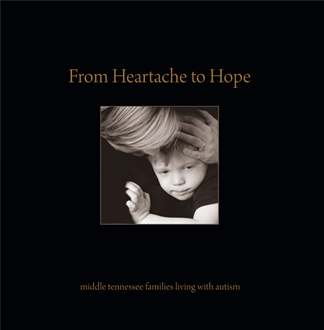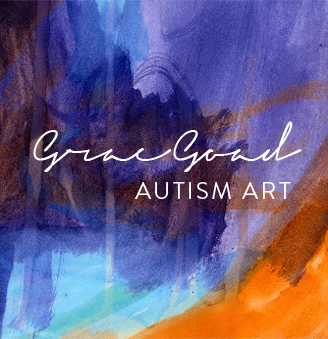
Once upon a time, a three-year-old girl, named Grace Walker Goad, was diagnosed with autism. Her family enrolled their only child in all the typical, standard early-childhood interventions of the late 90s: group, private, and public school speech/language therapies; private and public school occupational therapies, and a public preschool program for children with and without disAbilities. A year of these grueling and rigorous typical interventions went by and the little girl’s mother asked: “Is that all there is? What about dance? Music? Artmaking?” She felt her child was missing out on the sheer joys of childhood creative play in the pursuit of autism intervention.
An arduous search began, and, eventually, dance/movement, music, and art therapists were found. What the family discovered was that Goad had perfect pitch and perfect rhythm and when she created visual art, their otherwise hyperactive child was seduced into a zen-like state by her affinity for composition and color. They’d soon discover that many individuals with disAbilities, especially those with autism, possessed these visual-spatial-right-brain creative gifts.
Two years went buy and the talent discovered at four continued at six. Mom put her own art training, that ended with graduation from an arts portfolio high school, plus her years in communications, to work. Goad began showing her art at age six and selling at eight. By age 10, the girl with moderately severe autism, severe speech/language disorder and intellectual disAbilities, began to receive local and national media coverage, including sharing the stage of “The View,” when she was 11. That year, 2007, launched her first series of note cards in a product line, GraceArt, that has expanded to prints, other notecard series, tiles, and originals.
Today, the work of Goad has shown and been represented from New York City’s Soho, to the Massacchussett’s Berkshires, to Seattle, Wash., to Ventura, California, North Carolina, and about her home state of Tennessee. Her work sells at a number of gift shops and galleries around Nashville and at one miscellaneous local festival, workshop, conference or farmer’s market each month.
What it took was awareness: seeing the talent, knowing how to market it, finding artists/teachers/art therapists who could mentor. These are three basic ingredients are often missing for many would-be artists with disAbilities. This needs to change. More on that is intended here on “The Journey with Grace.” Meanwhile, Goad has emerged into young adulthood. Like 500,000 American youth with autism and more with other disAbilities, in the next ten years, she is rapidly aging out of her public school services. Mom (that would be me,) and co., are founding a nonprofit social enterprise to provide collaborative studio space and training, starting with adults with (and without) disAbilities, to create, exhibit, and sell their work. The social enterprise–selling high-end, gallery-quality works of artists with disAbilities, nation-wide, to developers, is underway, with one project down and three in the works.
Not every artist with a disAbility “presents” like Goad. Some are higher functioning, opting for a general education diploma track and even college. But in the end, most lack the communicative, socioeconomic and financial skills to market their work, in addition to locating educational resources, and more. This is a major issue targeted with the development of our nonprofit.
Shimai Pottery and Gifts, located at Nashville’s famed Loveless Cafe, has championed the art of Goad since 2007. Both Shimai and Mom are excited to share Shimai’s gallery studio space September 5 – 30, with a Saturday, Sept. 13 PM reception, 5:30 – 7:30, with talented young adult artists Donald Werther and Preston Vienneau. Please come. We are thrilled to see other young adult artists exploring and sharing their artistic talents here in Nashville.
A big thank you to Vanderbilt Kennedy Center, who, this summer, hosted “Grace Walker Goad: Two Decades in Color.” Looking back, Goad’s career and the nonprofit social enterprise we are forming, are rooted in the presence, exposure, and awareness of arts and disAbilities that this University Center for Excellence in Developmental Disabilities (UCEDD) has fostered. We learned about the artistic capabilities of artists with disAbilities through the exhibitions and workshops of VKC. We learned about other nonprofits, such as the one we are forming, through the exposure of VKC. A line could be drawn to this upcoming show for these three artists to the awareness and exposure by VKC to our community.
Thank you, Vanderbilt Kennedy Center. Thank you Shimai. Inquiries for opportunities to help launch our nonprofit so more artists with disAbilities can have equal opportunities for the joy of visual creation and exposure are most welcome. It takes a village. Let’s go paint the town!




